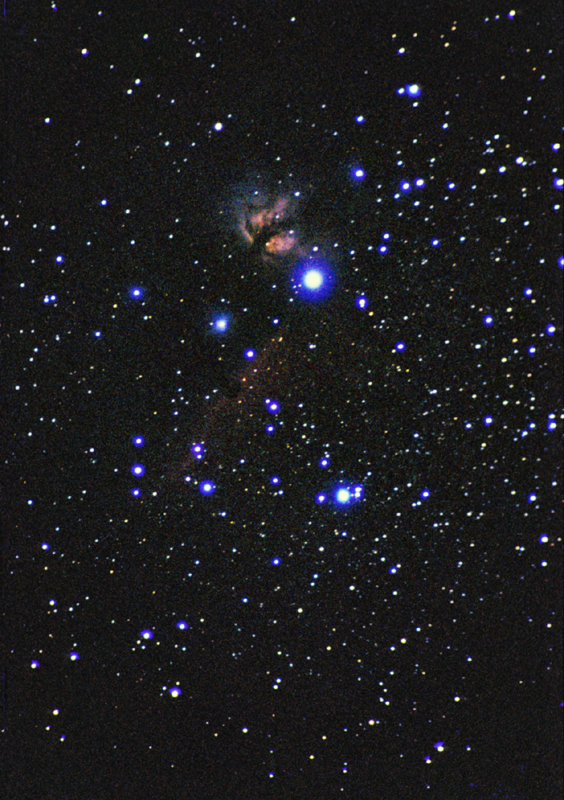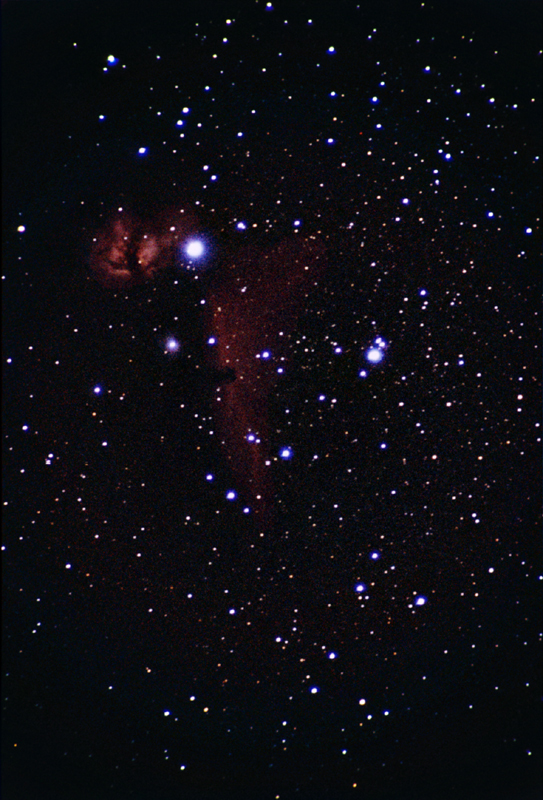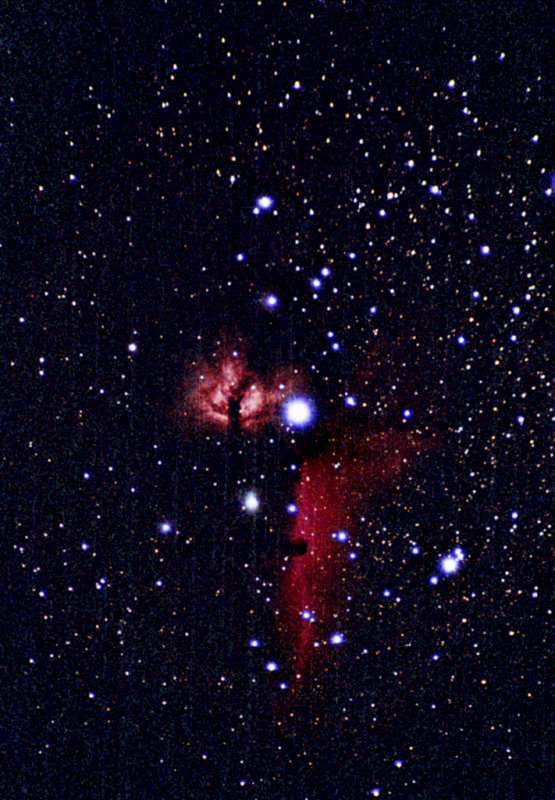
30 minutes exposure. Fuji Provia 1600 slide film.
5" f/5 refractor at prime focus.

Almost the entire constellation of Orion is shrouded in nebulosity. Much of this nebulosity is invisible to visual observers, except as patches of sky with fewer than normal numbers of stars. However in some locations there are stars close enough to the nebulosity to cause them to glow. The most obovious such location is M42, the Great Orion Nebula. Another is M 78.

Almost half way between these two is NGC 2024, also known as the Flame Nebula. Although this is a reasonably bright object, it can be difficult to discern due to the very close proximity of zeta orionis (Alnitak). Using moderate magnification makes it much easier to keep the bright star out of the field of view. Then the nebula is easily visible in a 4" telescope.

Also visible in the photographs is another very famous object, the Horsehead Nebula, Barnard 33. This is a tough object for visual observers due to the faintness of IC 434, however there have been reports of it being visible in a 4" telescope!
To the east (left) of B33 are two small reflection nebulae. The brightest of these, (the closer one to B33) is NGC 2023. The other is IC 435. Both of these are easy objects for a 6" telescope. Two more reflection nebulae are faintly visible around bright stars just to the north of NGC 2024. These are IC 431 and IC 432. These are much tougher objects to observe but can be detected with a 6" under dark skies.